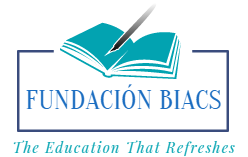Studying in the United States is a dream for many international students seeking quality education and diverse cultural experiences. However, to pursue academic endeavors in the US, students typically need to obtain a student visa. Understanding the types of student visas offered is crucial for those planning to study in the US.
The primary types of student visas in the USA available for international students are the F visa, the J visa, and the M visa. Each visa category is designed for specific types of academic or vocational programs, and they come with their own set of requirements and privileges.
1. F Visa (Academic Studies):
The F visa is the most common type of student visa for individuals pursuing academic studies at a college, university, or other accredited educational institution in the United States. There are two subcategories of the F visa:
- F-1 Visa: This visa is for full-time students enrolled in academic programs, including undergraduate, graduate, and language training programs. F-1 visa holders are permitted to work on campus under certain conditions and may be eligible for Optional Practical Training (OPT) after completing their studies.
- F-2 Visa: Reserved for dependents of F-1 visa holders, such as spouses and unmarried children under the age of 21. F-2 visa holders are not permitted to work or engage in full-time study but may enroll in part-time recreational or vocational courses.
2. J Visa (Exchange Visitor Program):
The J visa is intended for individuals participating in approved exchange visitor programs in the United States, including educational and cultural exchanges. There are several categories of J visas, but the most relevant for students are:
- J-1 Visa: This visa is commonly used by exchange students, scholars, and participants in work-and-study-based exchange programs. J-1 visa holders are subject to the two-year home-country physical presence requirement upon completion of their program, which may restrict certain immigration benefits.
- J-2 Visa: Issued to dependents of J-1 visa holders, allowing them to accompany the primary visa holder to the United States. J-2 visa holders may apply for work authorization, but only under specific circumstances and with approval from the United States Citizenship and Immigration Services (USCIS).

3. M Visa (Vocational Studies):
The M visa is designated for individuals pursuing non-academic or vocational studies at a recognized vocational or non-academic institution in the United States. The two main categories of the M visa are:
- M-1 Visa: Intended for students enrolled in vocational or technical programs that lead to specific vocational or non-academic credentials. M-1 visa holders are not permitted to work during their studies and have limited opportunities for practical training compared to F-1 visa holders.
- M-2 Visa: Similar to the F-2 and J-2 visas, the M-2 visa is for dependents of M-1 visa holders, allowing them to accompany the primary visa holder to the United States. M-2 visa holders are not authorized to work or engage in full-time study but may enroll in part-time recreational or vocational courses.
It’s important for prospective international students to thoroughly research the requirements and restrictions associated with each type of student visa before applying. Additionally, maintaining compliance with visa regulations, staying enrolled in a full course of study, and adhering to any visa-related reporting obligations are essential for maintaining legal status in the United States.
In conclusion, the United States offers various types of student visas to accommodate the diverse educational pursuits of international students. Whether pursuing academic studies, participating in cultural exchanges, or engaging in vocational training, each visa category serves a distinct purpose in facilitating the educational journey of international students in the US.

